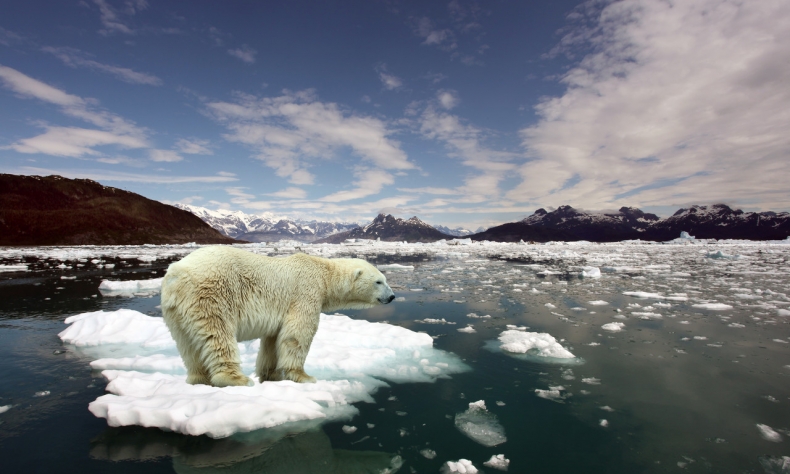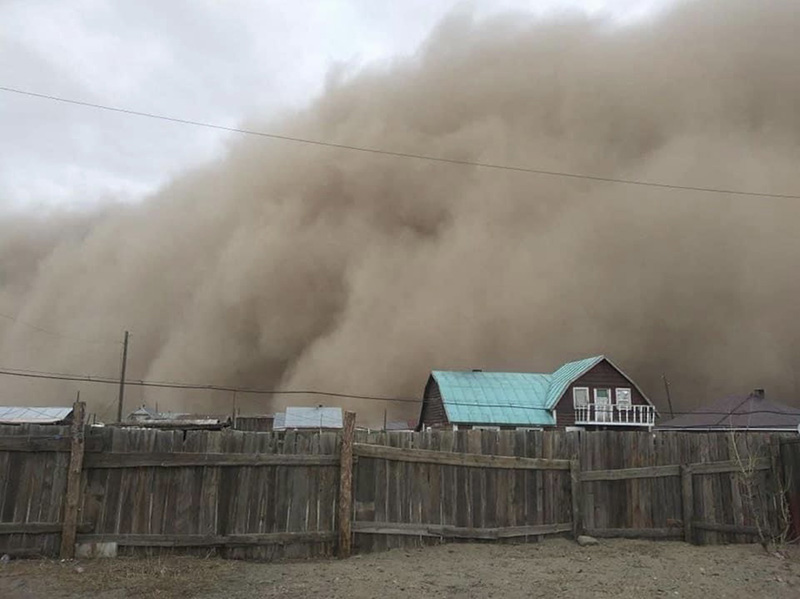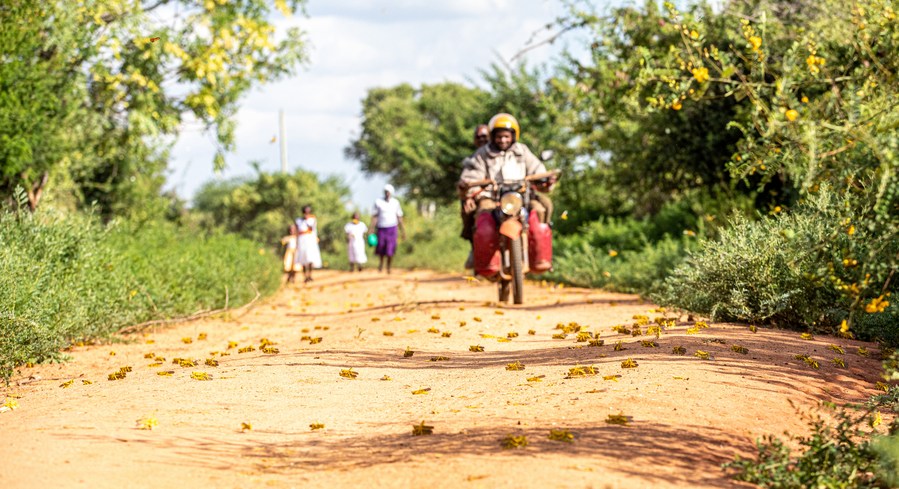The Anatomy of the Future: The Accelerating Insecurity from Climate Change

The myriad of climate change consequences on international security and stability will increasingly become visible in the coming decade.
In a harrowing decade of contagion, conflict and turbulence, climate security is the pre-eminent challenge confronting every country and the world. The strengthening of international climate cooperation and diplomacy are vital for building and sustaining international security and trust in responding to the existential threats of global warming.
Unprecedented financial investment and action must be implemented to prepare not only for future pandemics, but to minimise further global environmental destruction. This destruction is accelerating global warming and climate change, reinforced by feedback loops feeding global insecurity.
Given growing global economic insecurity and accelerating inequality from climate change, compounded by the Covid-19 pandemic, a new paradigm for global governance is urgently required during the remainder of the decade to 2030.
Staring into the global abyss: Consequences of climate insecurity
The unending pandemic continues to overwhelm fragile health and healthcare systems in different countries and regions, adding to the challenges of implementing effective strategies to combat climate change. The symbiotic relationship between climate change, food, and water shortages, rising sea levels, flooding in some regions and aridity and desertification in others, will intensify conflict and migration in the coming decade. Furthermore, climate change is fuelling growing anxiety and mental insecurity, augmenting the huge public health challenges posed by the pandemic.
The increasing demand for, and use of, non-renewable energy will continue to threaten vulnerable natural resources. Resource exploitation will drive further global pollution on land, water, and in the atmosphere, adding substantially to global warming and increasing climate insecurity. Every degree of global warming will significantly reduce economic growth and output in temperate zones and accelerate destabilising migration out of the hottest regions.
In May 2018, The United Nations Security Council Resolution 2417 condemned the starvation of civilians as a method of warfare. The resolution recognised that armed conflicts were but one factor undermining food security, with climate change, imbalances in the global distribution of food, fluctuations in food prices and the imposition of sanctions contributing to mounting grievances and the intensification of poverty and inequality.

Climate insecurity and the perfect storm
Climate insecurity is fuelled by the environmental destruction that is exacerbated by the disruption and migration of species and people from fragile habitats (sowing the seeds of pandemics and violence).
Many developing and fragile economies are increasingly vulnerable to the pandemic with climate-induced migration intensifying global poverty, famine, disease, and social and economic deprivation that will underpin rising violent extremism.
Countries with the highest disaster-driven (including climate insecurity) internal displacements have been Afghanistan with 1.1 million people; India, with 929,000; and Pakistan with 806,000.
The global ravages of climate change and global warming are unrelenting. Together with the continuing spread of the Covid-19 pandemic, the world is remorselessly preoccupied with extreme weather events that are complicating and adding to the miseries of countries and regions seeking to suppress or contain the virulent contagion of SARS-CoV-2.
2021 examples of climate insecurity
Since the beginning of 2021, climate insecurity has been evident in heavy snowfall paralysing Madrid for the first time in more than a century; a cyclone inundating Mozambique for the third time in three years; an Arctic polar vortex delivering unprecedented devastation of power and water infrastructure in Texas; and flooding of communities in the Amazon, Angola, and Cambodia.
Global warming has also precipitated the severest sandstorms in Beijing for a decade while the Western half of the United States is experiencing increasing drought and water shortages. India’s record heatwave has exacerbated the miseries of a second tsunami of Covid-19 and fears of an impending 3rd wave. Climate instability is also responsible in Kenya for the invasion of desert locusts in threatening millions of lives through food and nutrition insecurity.
Studies of global risk have identified the 100 global cities most vulnerable to climate insecurity, of which 80 percent are in India (containing 13 of the world’s most vulnerable cities) and China. More than 1.5 billion people are considered at “high” or “extreme” risk. Jakarta in Indonesia is identified as the most at-risk city.

Prioritising the Paris climate agreement
The decision of President Biden in February 2021 for the US to return to the Paris Climate Agreement[1] re-established the US commitment to join the international agreement that mandates restrictions on greenhouse gas emissions to limit global warming to 1.5 degrees centigrade above pre-industrial revolution average level.[2]
In late April, a virtual Leaders’ Summit on Climate was convened by President Biden with participation from 40 world leaders including President Xi Jinping, President Narendra Modi and President Vladimir Putin. This summit laid the foundations for the UN Climate Change Conference of the Parties (COP26) scheduled for Glasgow, Scotland in November 2021.
These discussions were followed appropriately by an urgent International Energy Agency (IEA) report on May 18, highlighting that the 2050 net zero carbon emissions target would be unachievable without cancellation of oil, natural gas, and coal investment projects.
Some countries are maintaining their commitment to fossil fuel investment, notwithstanding the urgent clamour for cleaner non-renewable energy projects. Such projects will generate rising prices for carbon, lithium, and copper, creating strategic tensions in international supply chains.
The International Energy Agency (IEA) has predicted that the global economy will demand at least 40 percent more energy by 2030, drawing substantially on freshwater resources. That will further critically exacerbate water scarcity in insecure regions such as the Middle East and North Africa.
Melting sea levels
The alarming rate of melting of the Greenland ice sheet has already precipitated widespread flooding and rising sea levels in the Indo-Pacific region and coastal littorals of the Pacific Ocean.
The melting of the Antarctic and Greenland ice sheets are consistent with a worst-case climate warming scenario outlined in reporting by the UN Intergovernmental Panel on Climate Change.
Such climate warming affects the scale and timing of the opening-up of maritime routes. The retreat of ice in the Arctic will open up new trade routes and spark a competition for resources. The enormous geographic expanse and sparse coastlines are likely to create additional tensions regarding the exploitation of new maritime resources (fisheries) and raw materials.
The strategic interplay between China, the US and Russia over energy and strategic mineral resources in the Arctic and the High North reflects its growing economic importance and the confluence of fragile international relations and accelerating global warming in the region. Thus, the Arctic Council and Svalbard Treaty must be strictly upheld.
The myriad of climate change consequences on international security and stability will increasingly become visible in the coming decade.
[1] Following the Trump Administration withdrawal in November 2020
[2] The earth’s temperature in 2021 is projected to be between 0.91C and 1.15C above 1850-1900 prices levels, a reduction on recent years due to the onset of the La Niña cooling event in the Pacific Ocean.
Adrian Kendryis Former Senior Defence Economist and Adviser to the Secretary General, NATO (2001-2014), Economic Adviser to the NATO Strategic Foresight Analysis Programme 2021.
The article reflects the author’s opinions, and not necessarily the views of China Focus.
Copyedited by Liu Xiaomin
 Facebook
Facebook
 Twitter
Twitter
 Linkedin
Linkedin
 Google +
Google +



